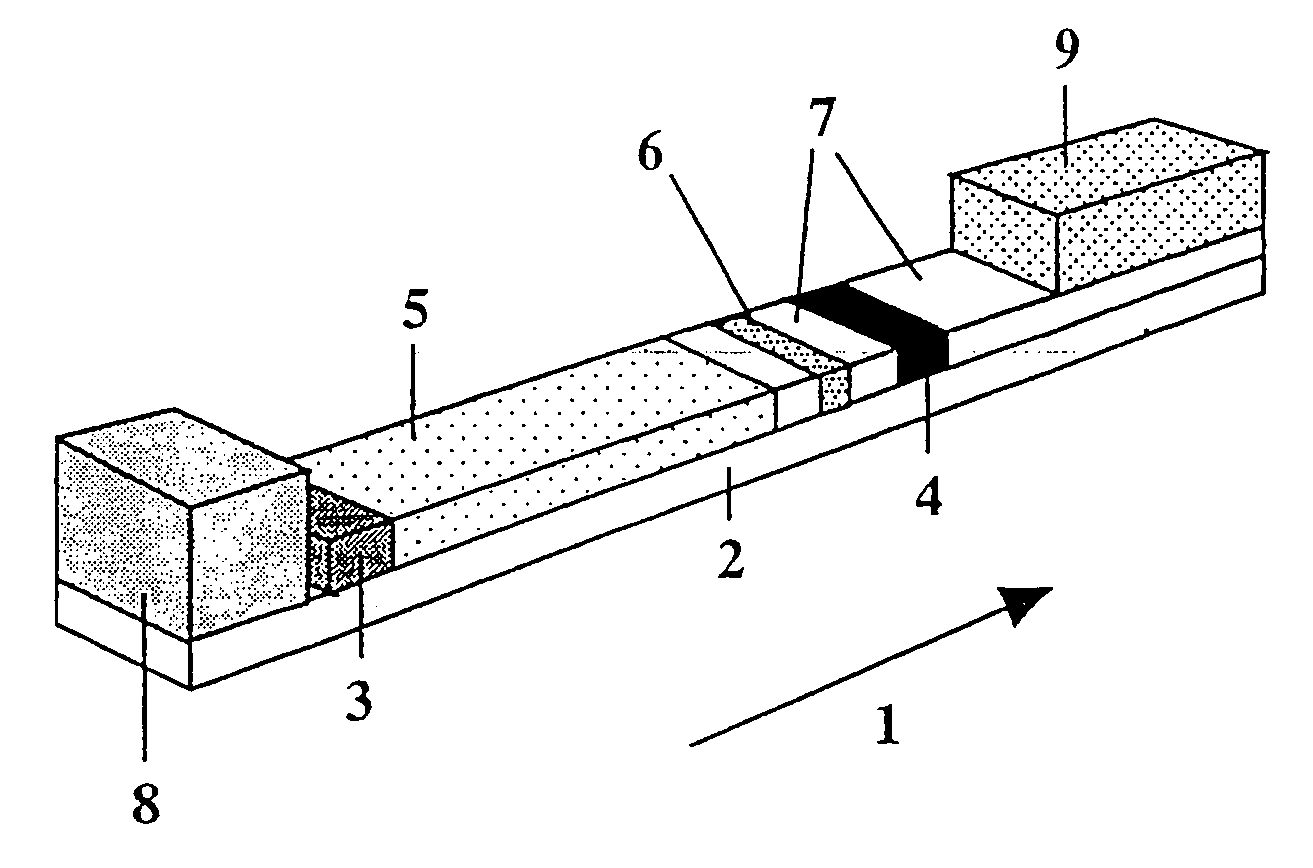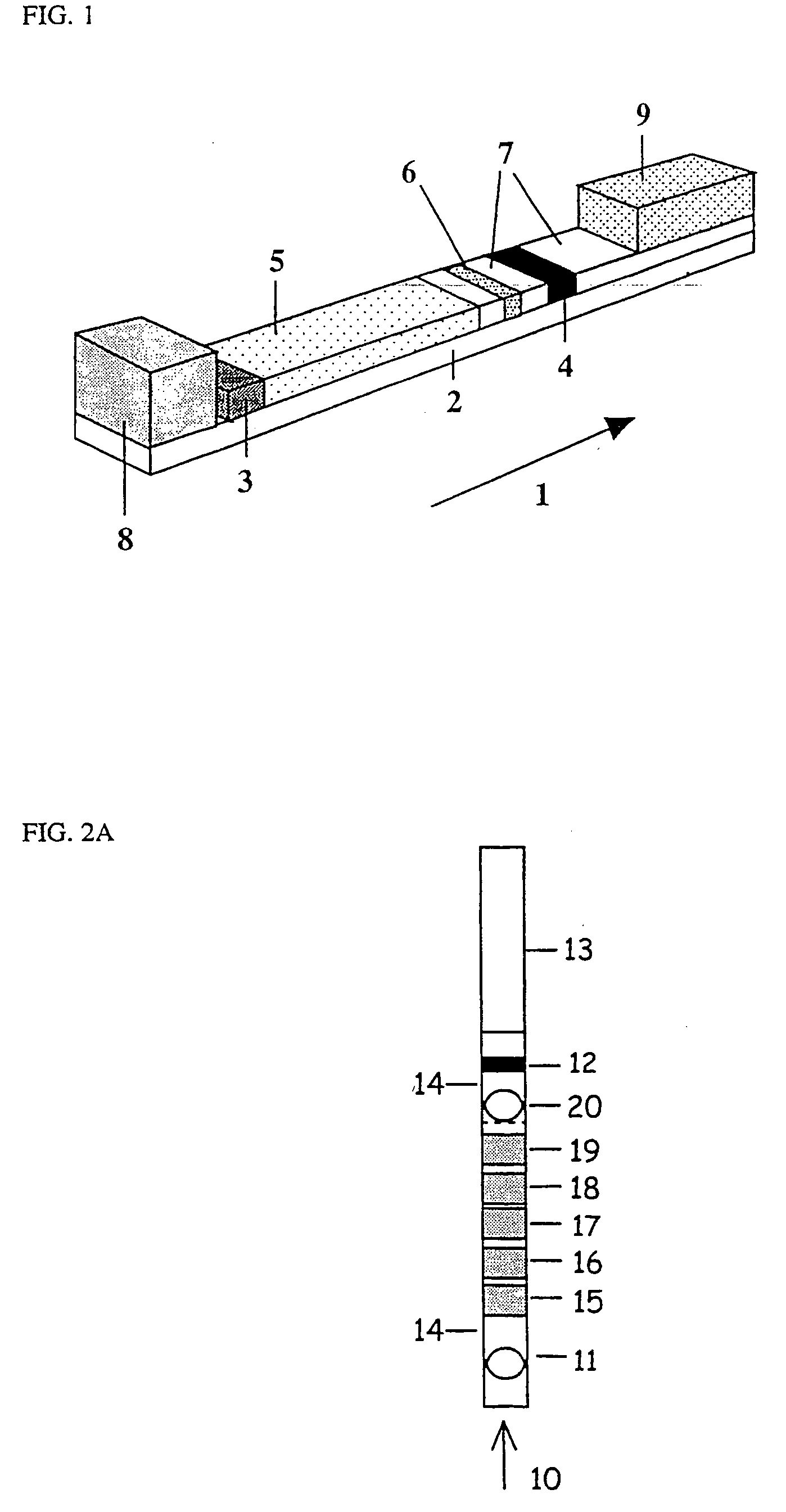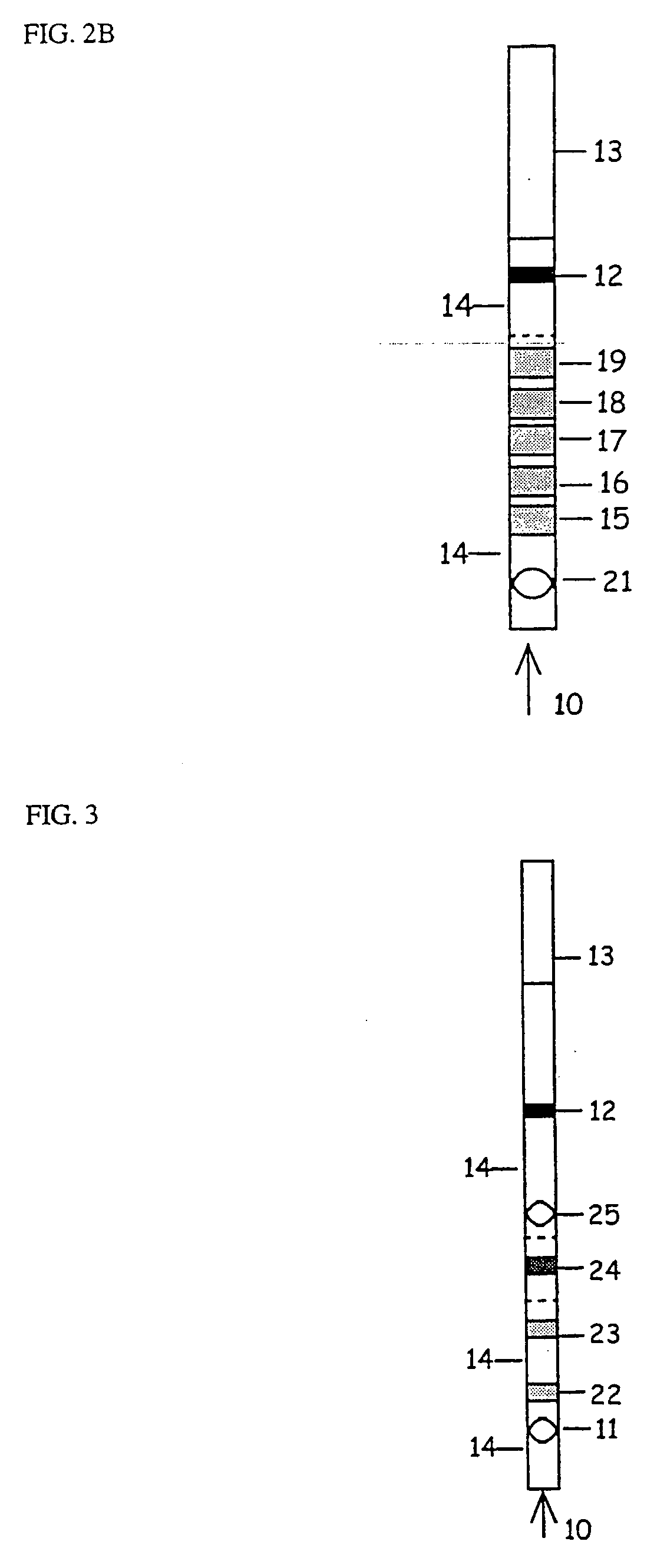Ligand binding assay and kit with a separation zone for disturbing analytes
a technology of separation zone and assay, which is applied in the field of ligand binding assay and kit with separation zone for disturbing analytes, can solve the problems of complicated signal formation, high equipment cost, and special education of personnel, and achieve the effect of simple and rapid method and convenient determination of analytes
- Summary
- Abstract
- Description
- Claims
- Application Information
AI Technical Summary
Benefits of technology
Problems solved by technology
Method used
Image
Examples
example 1
Test Strip For Measurement of the Proportion of Free IgE, IgE Bound to IgG and Antibodies to IgE
[0099] In FIGS. 2A, 2B and 3 the direction of the transport flow is indicated by an arrow (10). In each variant there may at the beginning of the transport flow be a zone ASZ (11) for sample, downstream thereof a zone DZ (12), at the end of the transport flow a sucking part (13), and between each type of zone, parts which only serve as transport zones (14).
[0100] FIG. 2A: The variant according to this figure has five separation zones (SZ) in which the ligand may be the same or different or be present in different amounts (15-19) and an AR*Z (20) for reagents.
[0101] FIG. 2B: This is the same sequence of zones as in FIG. 2A except that ASZ (11) and AR*Z (20) coincide (21). This zone sequence may also be used for the cases where the analyte per se is detectable when it is part of a signal complex in DZ. An AR*Z is then not necessary.
[0102] FIG. 3: The sequence of zones according to this figu...
example 2
Determination Method for CD-Transferrin in Patient Samples
[0123] Separation membrane having anion-exchanging properties: A sheet of nitrocellulose membrane (5 .mu.m, nitrocellulose on polyester, Whatman International Ltd, England) was placed in a solution of 0.1% polyethylene imine (PEI, Sigma, St Louis, Mo., U.S.A.) in ultrapure water (Milli Q, Millipore Corp., Bedford. Mass., U.S.A.). The solution was shaken for 3 hours and then placed in 0.1% in Tween 20 for 30 minutes, air-dried and then stored in a plastic bag at +4.degree. C. The modification degree of the membrane was checked with bromophenol blue (pK=4.1).
[0124] The function of modified membranes to interact with charged proteins was confirmed by transporting .sup.125I-labelled proteins (bovine serum albumin, tetrasialo- and asialo-transferrin which had been labelled by the Chloramine T method) in a lateral liquid flow in strips of the sheet. The protein having the highest pI had the strongest tendency to migrate with the li...
example 3
Test Strip with Sambucos Nigra Lectin in the Separation Zone
[0136] Separation membrane: A sheet (4 cm.times.12 cm) of cellulose (cellulose filter 54, Whatman International Ltd, England) was activated with cyano-diethyl-aminopyridine (CDAP) (Kohn and Wilchek, Appl. Biochem. Biotechnol. 9 (1984) 285-304). The activated sheet was placed in a solution of 0.1 mg / ml of Sambucus Nigra lectin (binds sialic acid which is in the terminal position of a carbon chain; Vector Laboratories Inc., Burlingame. Calif., U.S.A.) in 0.1 M NaHCO.sub.3, pH 8.4. The solution was shaken for 2 hours, and the sheet was then placed in a) 0.1 M NaHCO.sub.3, b) 0.5 M NaCl, c) distilled water, d) 0.1 M acetate buffer, pH 4.5, e) 0.1 M NaHCO.sub.3, pH 8.4, f) 0.5 M NaCl, g) distilled water, h) 0.1 M acetate buffer, pH 4.5, i) 5 mM BIS-TRIS, pH 6.4, containing 0.1% Tween 20. Between the different baths, excess liquid was sucked offby means of kitchen roll paper. After the wash procedure, the sheet was air-dried and ...
PUM
 Login to View More
Login to View More Abstract
Description
Claims
Application Information
 Login to View More
Login to View More - R&D
- Intellectual Property
- Life Sciences
- Materials
- Tech Scout
- Unparalleled Data Quality
- Higher Quality Content
- 60% Fewer Hallucinations
Browse by: Latest US Patents, China's latest patents, Technical Efficacy Thesaurus, Application Domain, Technology Topic, Popular Technical Reports.
© 2025 PatSnap. All rights reserved.Legal|Privacy policy|Modern Slavery Act Transparency Statement|Sitemap|About US| Contact US: help@patsnap.com



